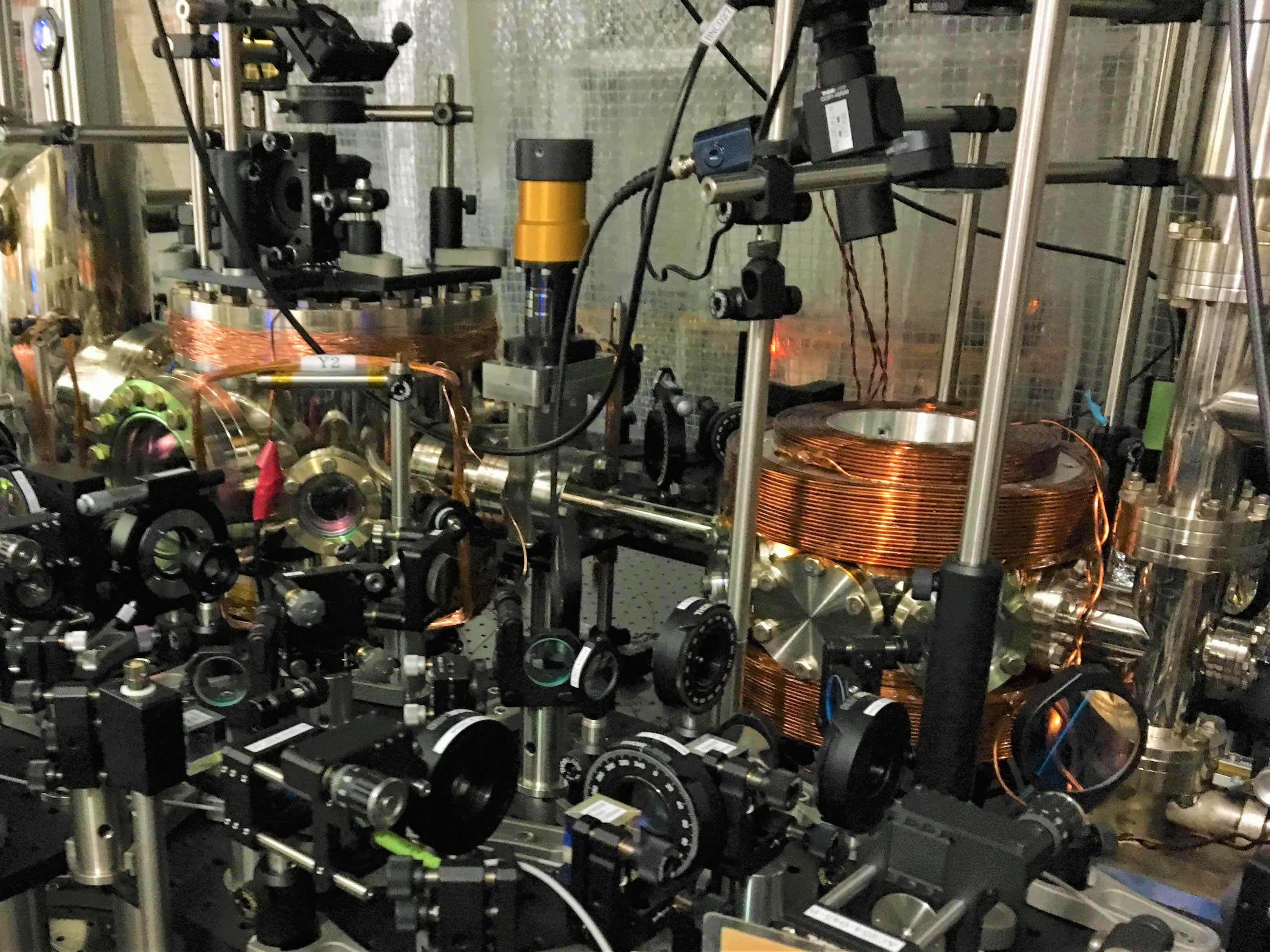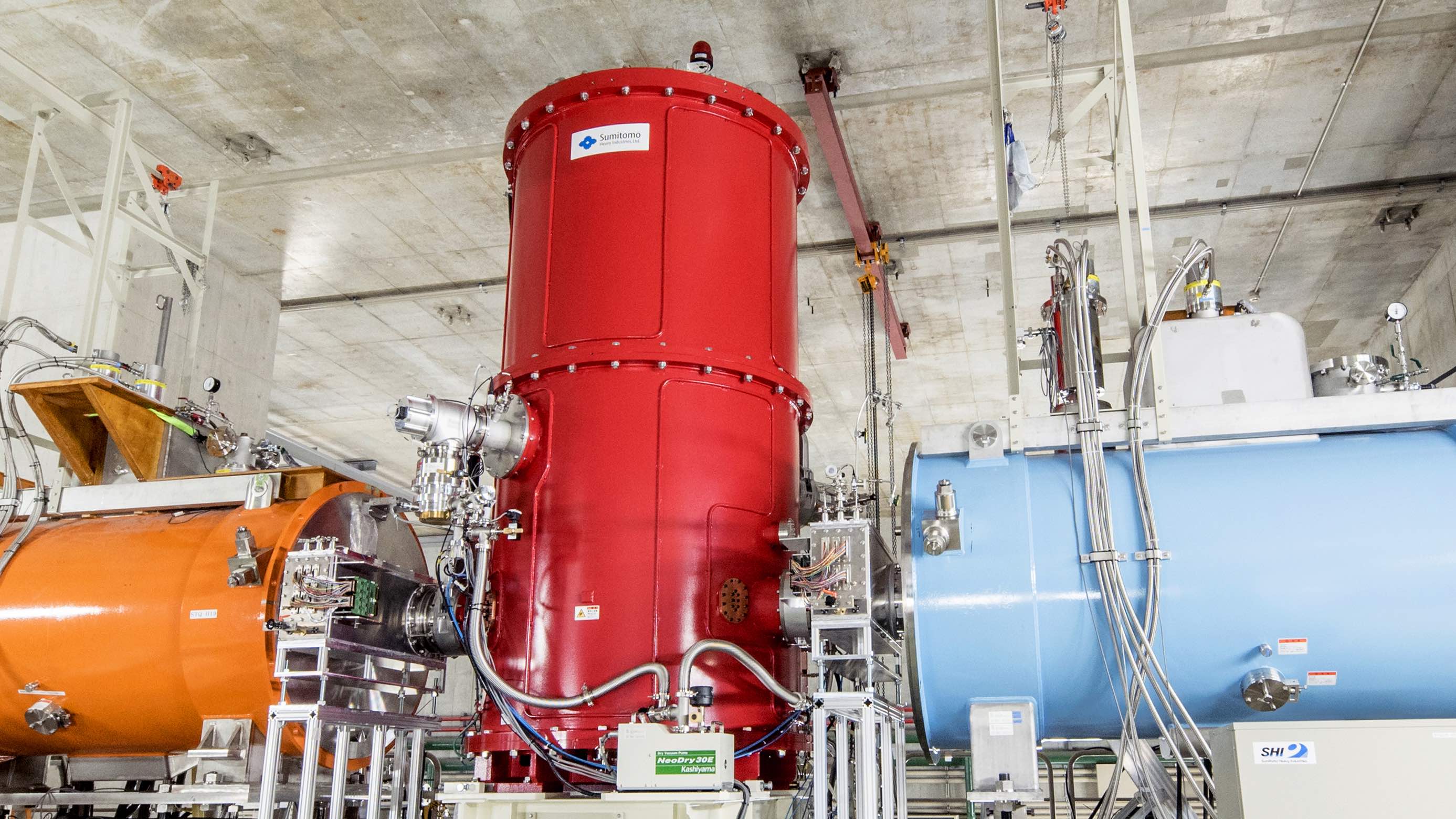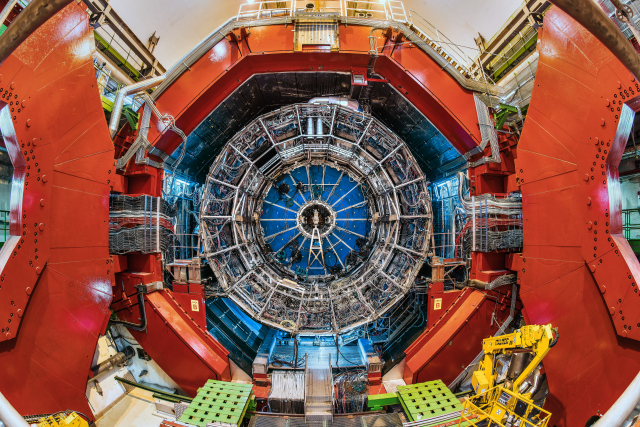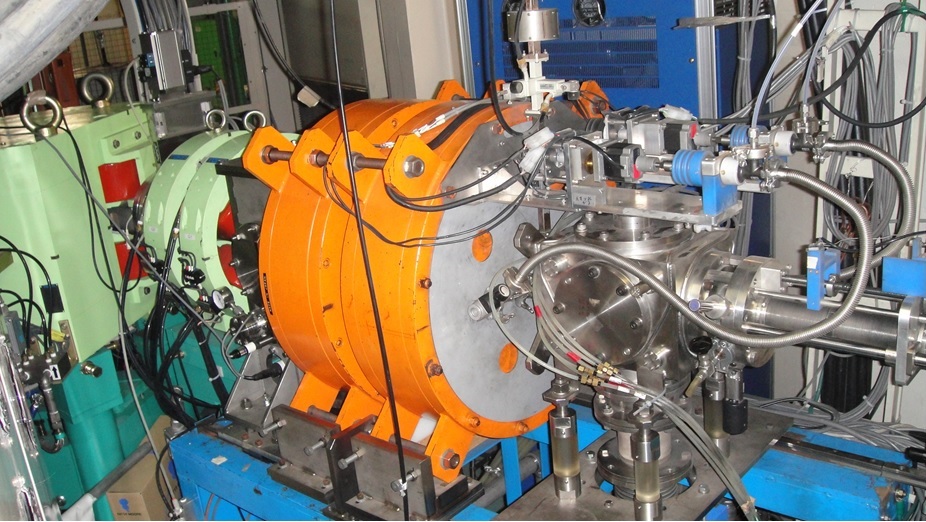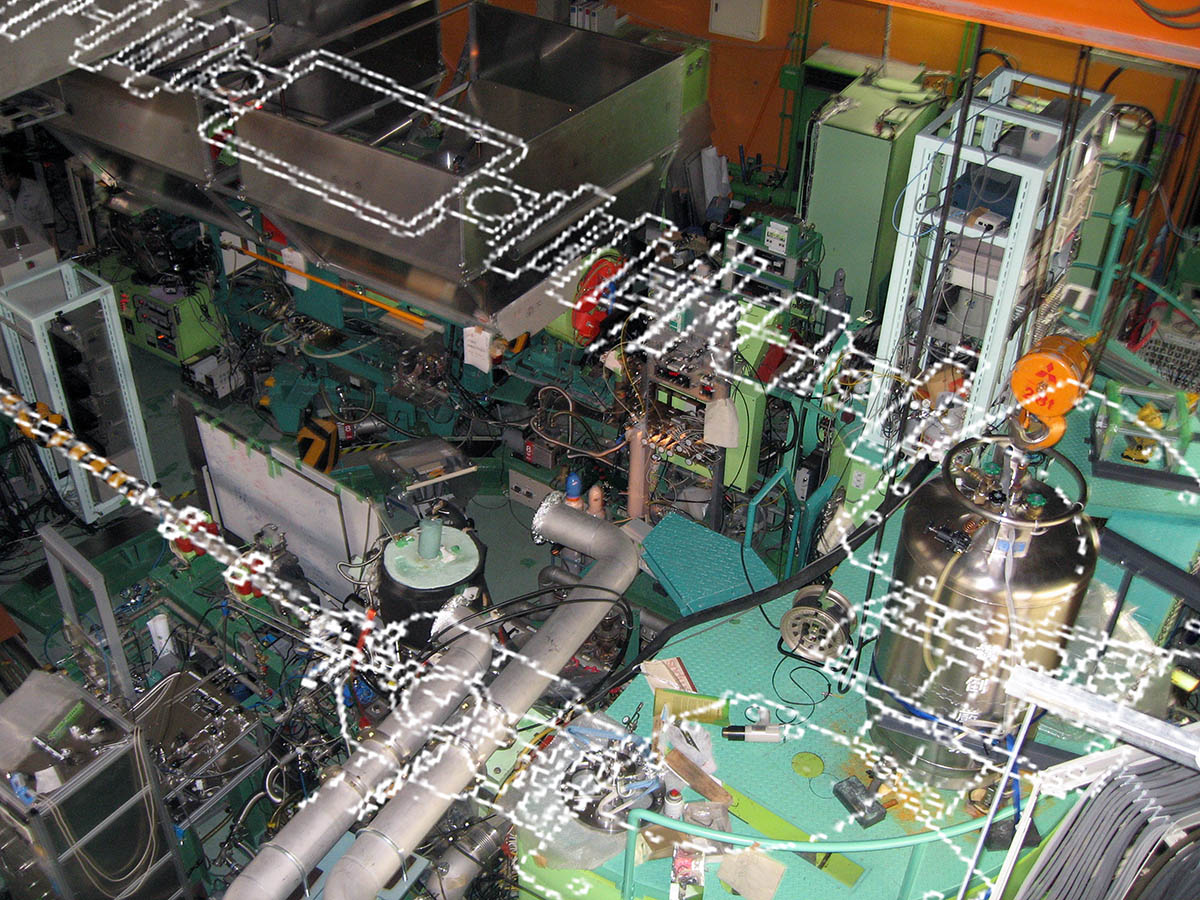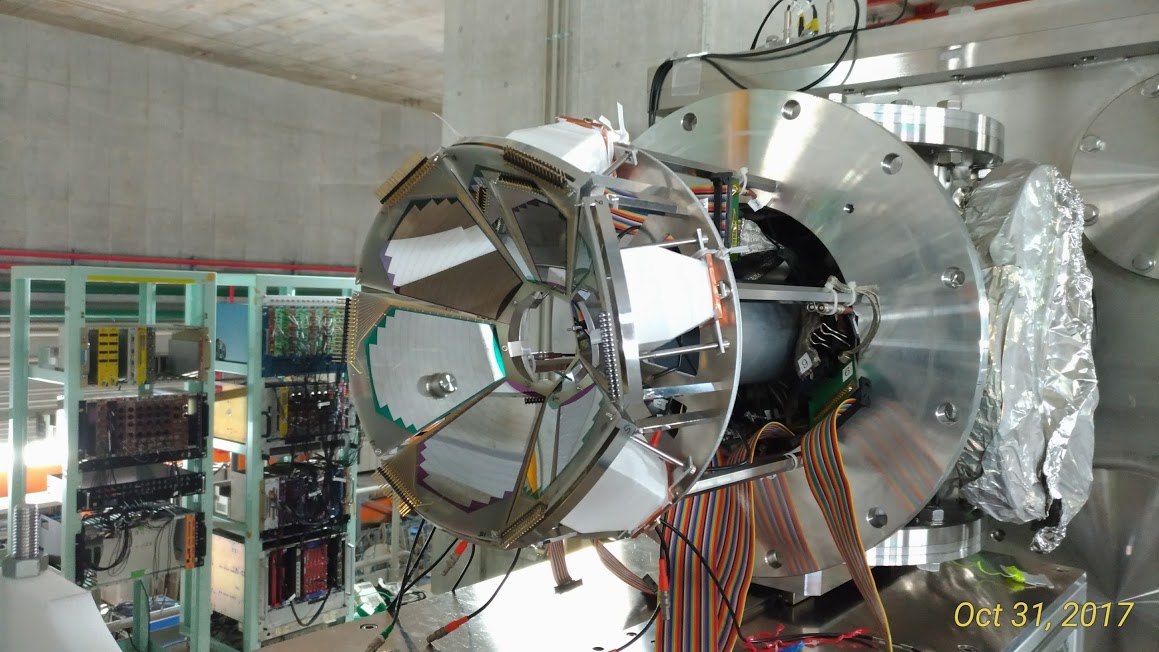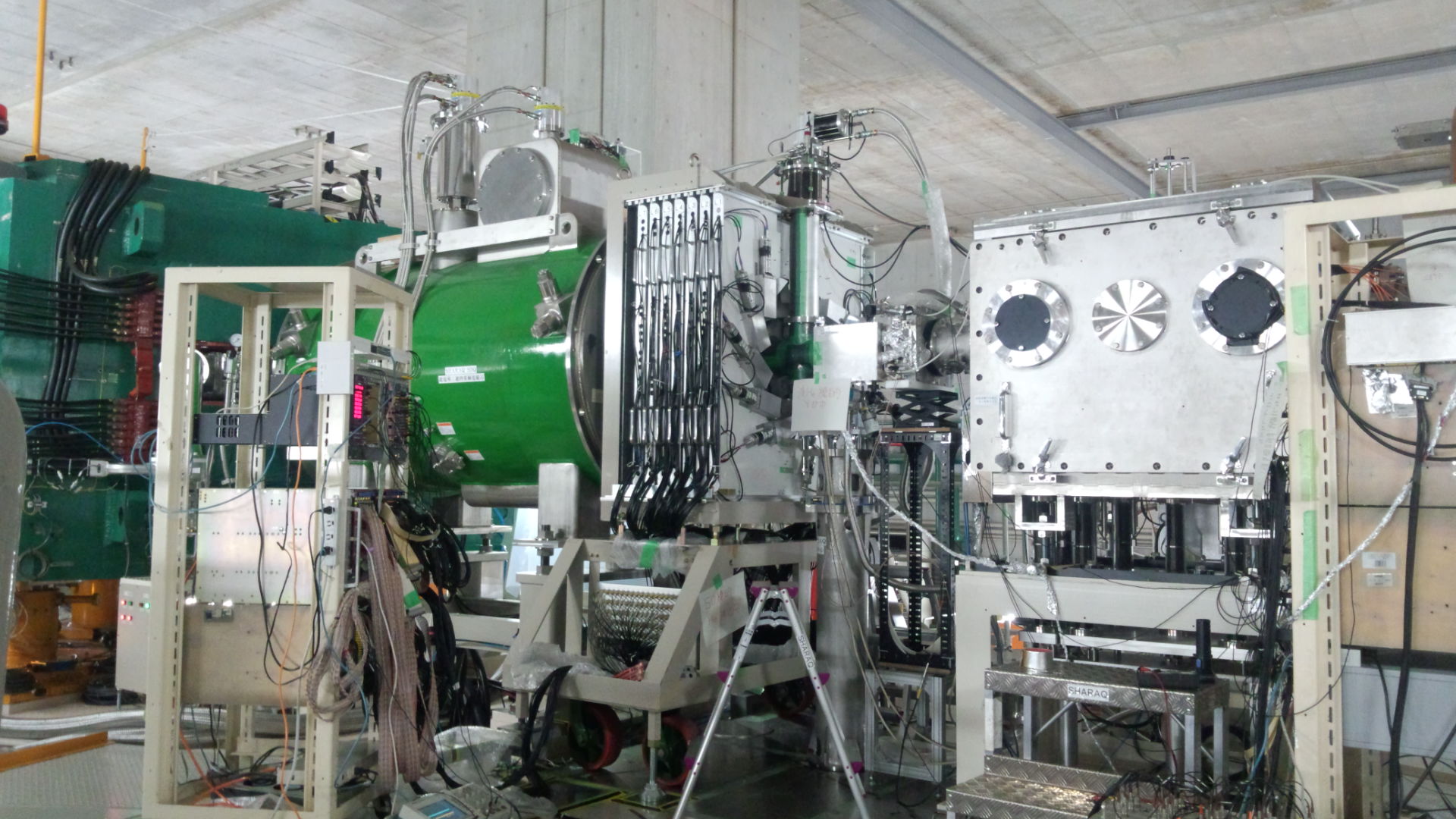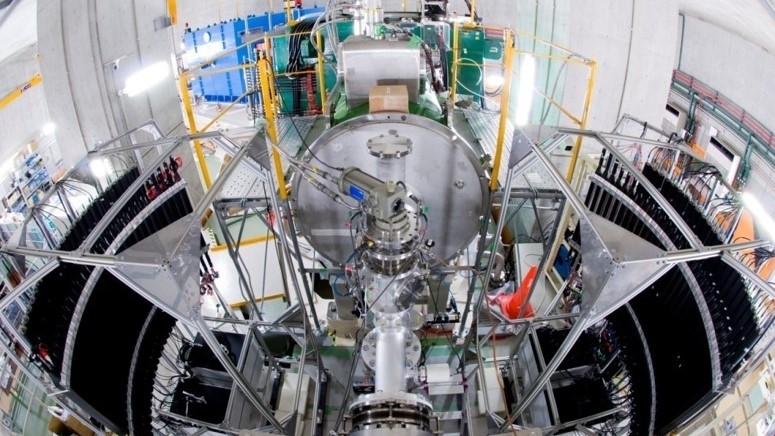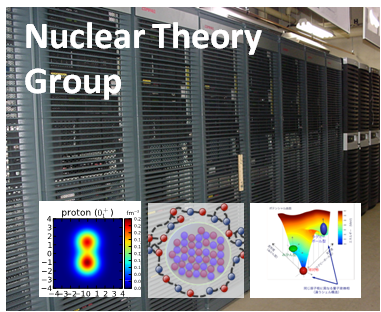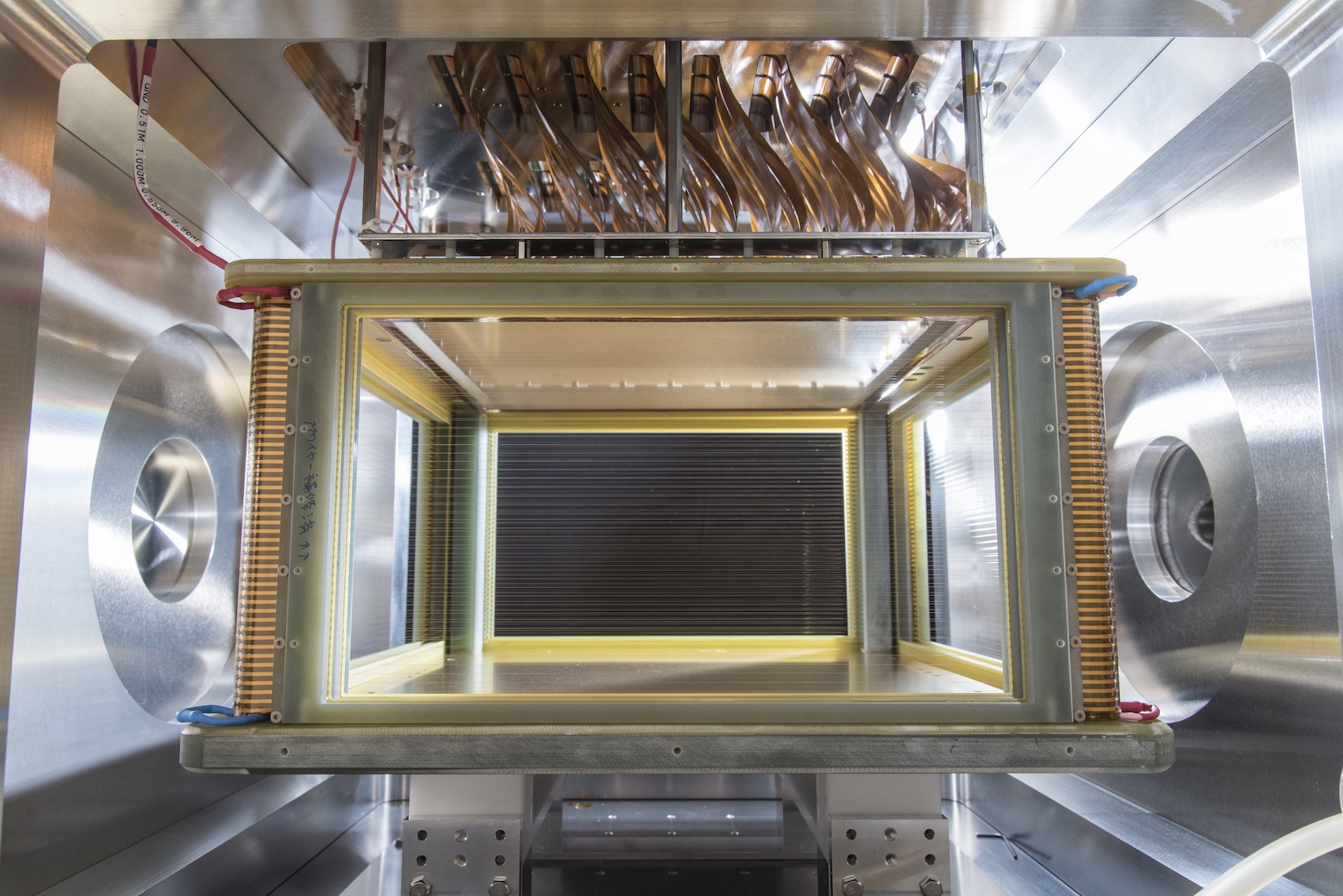Big-bang Nucleosynthesis (BBN)
The universe is thought to be created as an extremly high temperature and dense condition, which is called as Big Bang. Three minutes after the moment of Big Bang, the Big-Bang nucleosynthesis (BBN), which is the first nucleosynthesis in the universe, occurs, making the material of the stars that are created later. The elements synthesized at that time were mainly hydrogen, helium and small amount of lithium. In spite of its simplicity, BBN is still not understood completely to the details. In particular, the discrepancy of the observed and calculated abundance of lithium remains as a big problem. This problem is still bothering the reseachers in the world, but a solution could be given by a precise study of the nuclear reactions in BBN. The nuclear astrophysics group in CNS is making experimental studies on the reactions of Beryllium-7 with neutron or deutron at the BBN temperature. (Yamaguchi Lab.)
X-ray Burst and Nuclear Reactions with Unstable Nuclei
X-ray burst is known as the most frequent thermonuclear explosion in the universe. Observations have been made for the amount of X-ray decaying in time (light curve) for various X-ray burst events, however, we still cannot reproduce the light curve completely by simulation. One missing factor is a precise nuclear reaction rate, which is not easy to measure for reactions with unstable nuclei, while they play an essential role in X-ray bursts, as the processes of proton-rich nuclei (rp-process, αp-process). By making use of CRIB, the RI beam separator of CNS, we have been studying reactions involving unstable nuclei. (Yamaguchi Lab.)
Galactic gamma-ray and Aluminum-26 Nucleus
By the advanced technology in the observation of cosmic gamma-rays,
now we know a plenty of gamma-rays originating from the aluminum-26 (26Al) nucleus
are coming to the earth from the galaxy.
26Al is a relatively long-lived unstable nuclide, and cannot be found much on the earth,
but it exists in the stars. This observation is an evidence of an on-going nucleosynthesis.
However, which kind of stars are producing how much 26Al is still unclear.
What complicates the problem is that the 26Al nucleus has an “isomer” state, in additon
to the normal (ground) state.
At CNS, we succeeded in making an isomeric 26Al beam, and making a unique study on
the reaction with 26Al. (Yamaguchi Lab.)
Origin of heavy elements in the universe, supernovae vs neutron-star marger
The origin of the elements heavier than iron is one of the big physics questions. These elements are believed to be synthesized a successive neutron-capture reaction and beta decays. To produce gold or platinum elements, neutron density higher than 1023cm3 and temparature higher than 109K are required. Under this condition, heavy element like uranium are synthesized within several seconds from hydrogen. Supernovae have been regarded as the astrophysical site. However, after the neutron-star marger, the hint of the lantanoide was observed, suggesting that the marger is also a possible astrophysical site. In this process, the neutron-rich unstable nuclei are involved. The current theoretetical uncertainties of the neutron capture reaction is as large as 2 orders of magnitudes. We are going to study the site of the synthesis through evaluating the neutron-capture reaction cross section using OEDO and SHARAQ. (Imai Lab.)
